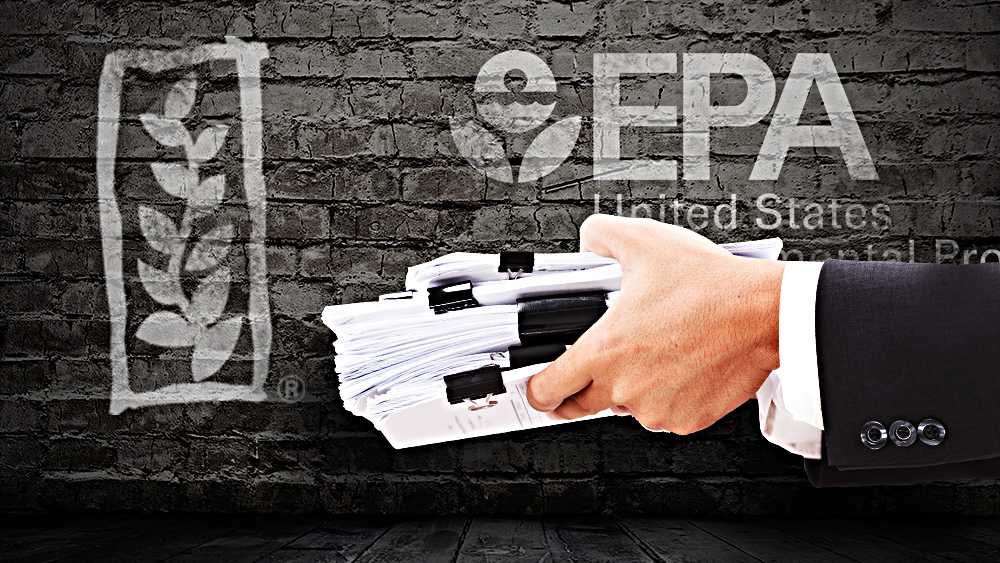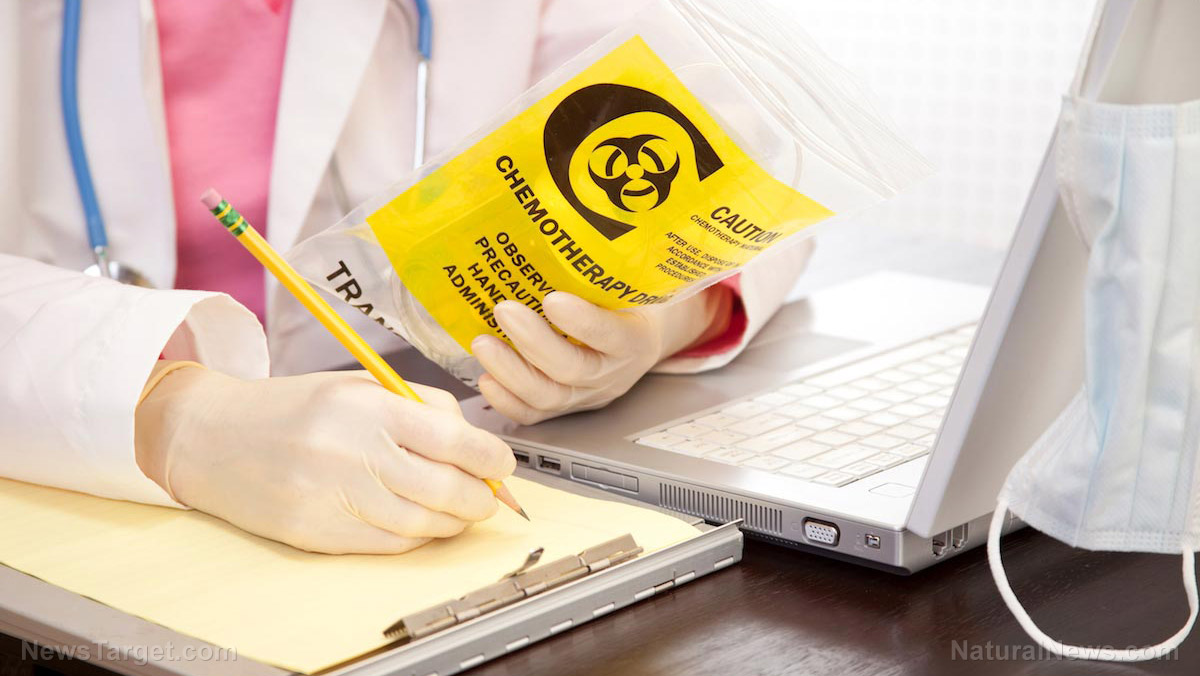
Advertisement
Court documents released on March 13th show that Monsanto colluded with the EPA to bury scientific evidence linking its glyphosate product (RoundUp) to cancer in humans (specifically, Non-Hodgkin’s Lymphoma).
Glyphosate.news has published the full text of the court document “Motion to Compel Deposition of Jess Rowland.”
Also published on Glyphosate.news is this heartbreaking letter from a dying EPA scientist begging her colleagues to stop lying about the dangers of glyphosate.
Continuing with the full disclosure of these court documents — originally acquired by U.S. Right to Know — Glyphosate.news has now published the full text of the “Third-Party Discovery and Pending Motions to Seal” document.
Some of the more interesting highlights from this document include these passages:
Monsanto has trumpeted reports generated by the Environmental Protection Agency (“EPA”) concluding that glyphosate is not hazardous… In this phase, which is limited to “general causation,” the Court will decide only whether there is sufficient admissible evidence that glyphosate and/or Roundup is capable of causing cancer (specifically, Non-Hodgkin’s Lymphoma) in humans.
Texas A&M’s motion to quash the subpoena to Dr. Ivan Rusyn is granted. [Who is Dr. Ivan Rusyn? And why doesn’t Monsanto want him subpoenaed?]
Monsanto’s request to seal the documents submitted in connection with the motion to compel Rowland’s deposition is denied, with the exception of one document. As previously mentioned, the EPA reports are important to this litigation. Therefore, to support its sealing request, Monsanto must present compelling reasons for concealing documents relating to the EPA reports from the public… Potential embarrassment to Monsanto (or to Jess Rowland) is not enough.

Finally, the parties have submitted a discovery letter regarding Monsanto’s practice of designating a high percentage of documents produced in discovery as “confidential” in accordance with the protective order. That dispute is resolved in favor of Monsanto… when the plaintiffs provisionally file documents under seal based on Monsanto’s confidentiality designation, Monsanto must undertake a good-faith review of the documents and inform the Court whether they should remain under seal. [i.e. Monsanto will inform the court of whether Monsanto thinks its own documents should remain secret from the court.]
If Monsanto continues to file unreasonable or unsubstantiated declarations, it will be sanctioned.
Read the entire decision from U.S. District Judge Vince Chhabria at this link from Glyphosate.news.
Does Glyphosate / RoundUp cause Non-Hodgkin’s Lymphoma?
Here’s what a few authors and researchers say on the subject:
Because the shikimate pathway is only found in plants, it is assumed that glyphosate does not affect animals and therefore is safe; however, the retinoic acid signaling pathway in animals is very similar to the shikimate pathway. Research by Mesnage et al. found that Roundup from 1 ppm to 20,000 ppm causes cells of the human body to die through necrosis. At 50 ppm it delays the cellular apoptosis that is essential for the normal functioning and regeneration of cells, body tissues, and organs. GLYPHOSATE AND CANCERS: A case-controlled study published in March 1999 by Swedish scientists Lennart Hardell and Mikael Eriksson showed that non-hodgkin’s lymphoma (NHL) is linked to exposure to a range of pesticides and herbicides, including glyphosate. Prior to the 1940s, non-hodgkin’s lymphoma was one of the world’s rarest cancers. Now it is one of the most common. Between 1973 and 1991, the incidence of non-hodgkin’s lymphoma increased at the rate of 3.3 percent per year in the United States, making it the third fastest-growing cancer. In Sweden, the incidence of NHL has increased at the rate of 3.6 percent per year in men and 2.9 percent per year in women since 1958.
– The Myths of Safe Pesticides by Andre Leu
Roundup Ready soybeans convert much of the applied glyphosate into a metabolite called AMPA (aminomethylphosphonic acid) with unknown health properties. In one study, the beans contained 3 mg/kg of glyphosate and up to 25 mg/kg of AMPA.35 “The presence of high AMPA residues in Roundup Ready soybean was not anticipated and presents a new type of consumer exposure.” Glyphosate is toxic According to the Journal of Pesticide Reform, “Symptoms of exposure to glyphosate include eye irritation, burning eyes, blurred vision, skin rashes, burning or itchy skin, nausea, sore throat, asthma and difficulty breathing, headache, lethargy, nose bleeds, and dizziness. Glyphosate and glyphosate-containing herbicides caused genetic damage in laboratory tests with human cells, as well as in tests with laboratory animals. … Exposure is linked with increased risks of the cancer non-hodgkin’s lymphoma, miscarriages, and attention deficit disorder,” as well as Parkinson’s disease. Exposure to mouse testicular cells (Leydig cells) resulted in a 94% reduction in sex hormone production.
– Genetic Roulette – The Documented Health Risks of Genetically Engineered Foods by Jeffrey M. Smith
According to French and international bodies, glyphosate is considered an irritant that may produce severe eye lesions, and [is] toxic for aquatic organisms,” Marc reports. “According to the World Health Organization, the U.S. EPA, and the European Community, the use of glyphosate in accordance with the manufacturers’ instructions therefore poses no human health risks. . . . However, several epidemiological studies have demonstrated a correlation between exposure to glyphosate and cancer.” Roundup Triggers the First Stage of the Development of Cancer: In fact, while regulatory agencies have continued to classify glyphosate-based herbicides as “not a human carcinogen,” a series of epidemiological studies tend to demonstrate exactly the opposite. For example, a Canadian study published in 2001 by the University of Saskatchewan showed that men exposed to glyphosate more than two days a year had twice the risk of developing non-hodgkin’s lymphoma of men never exposed.
– The World According to Monsanto by Marie-Monique Robin
This article may contain statements that reflect the opinion of the author
Advertisement
Advertisements















